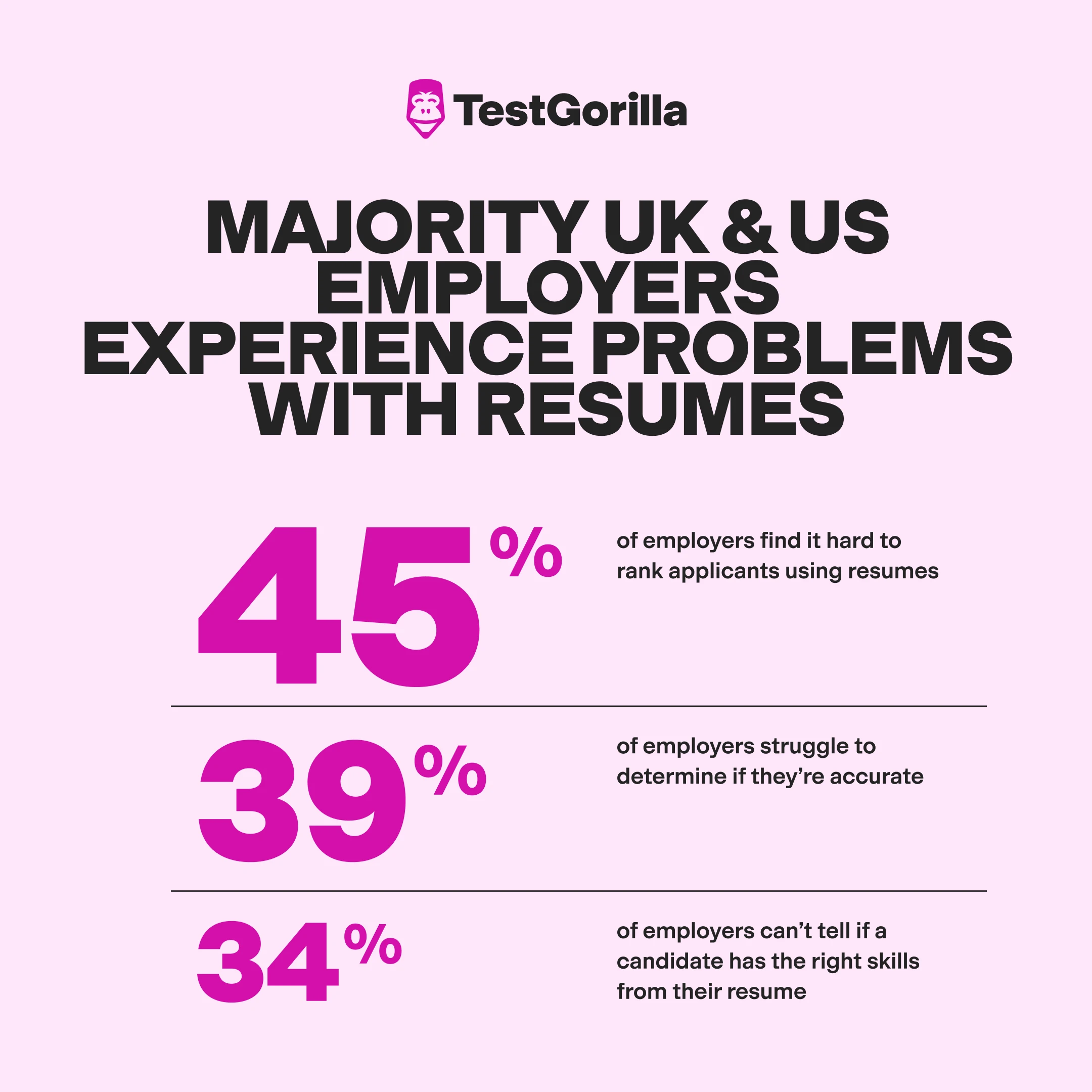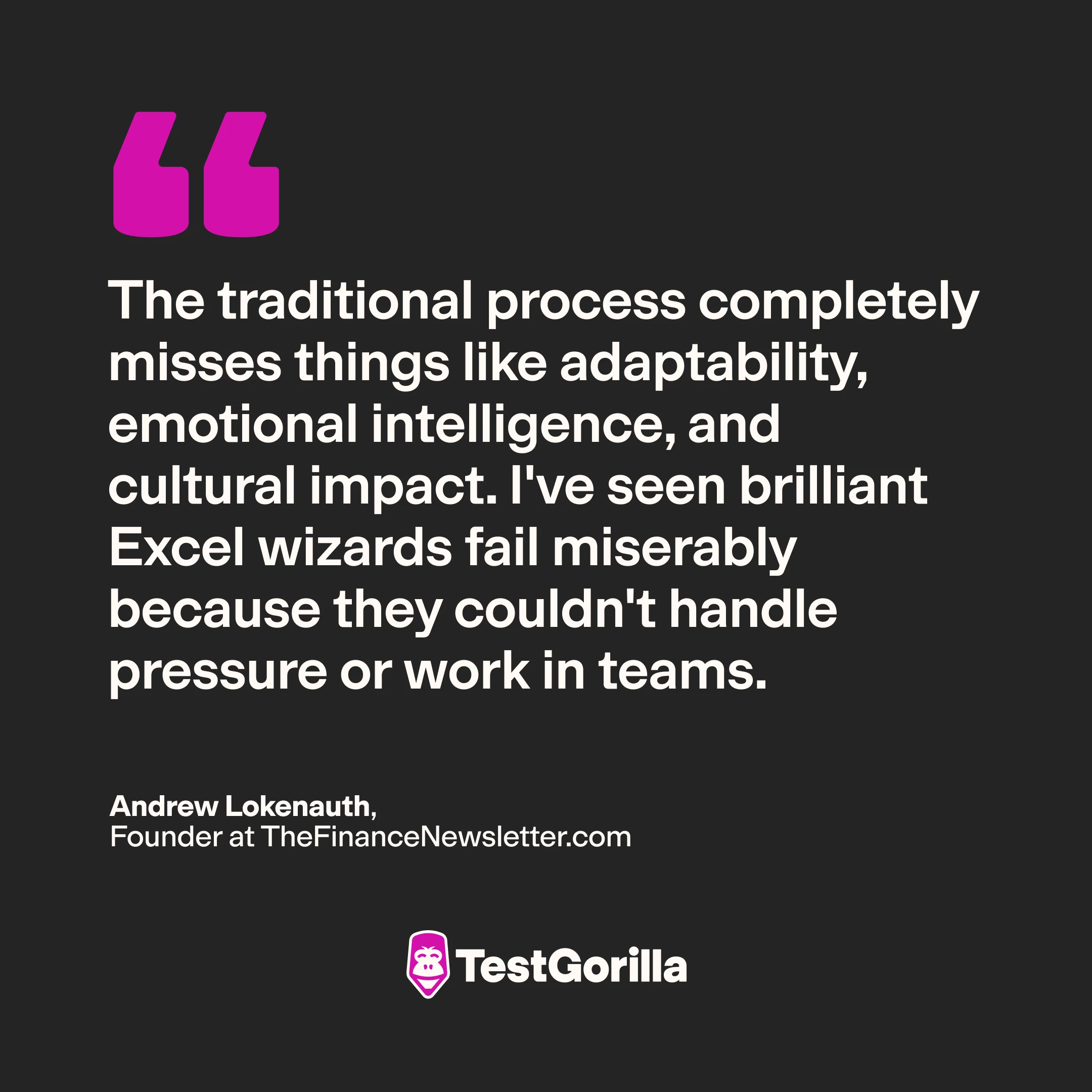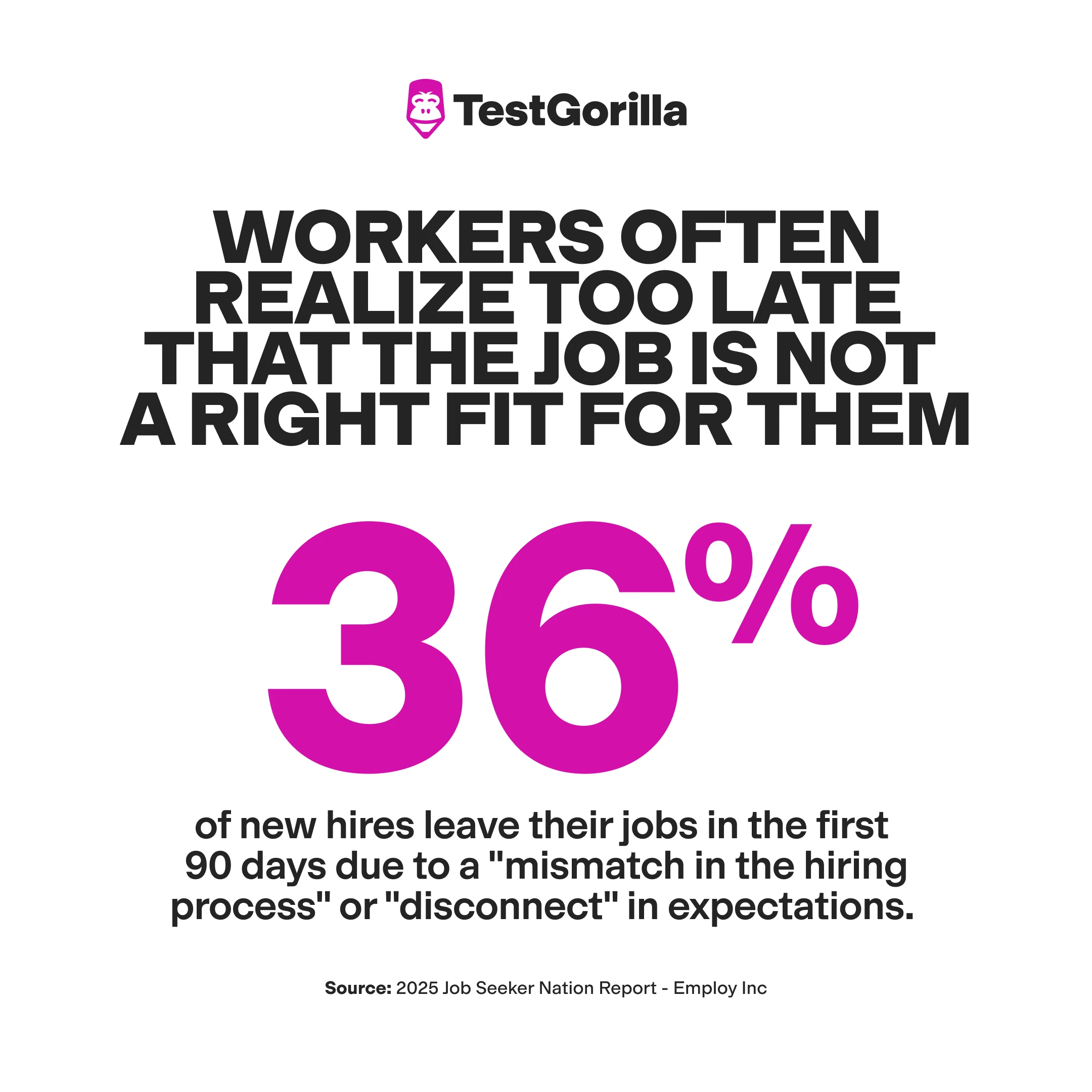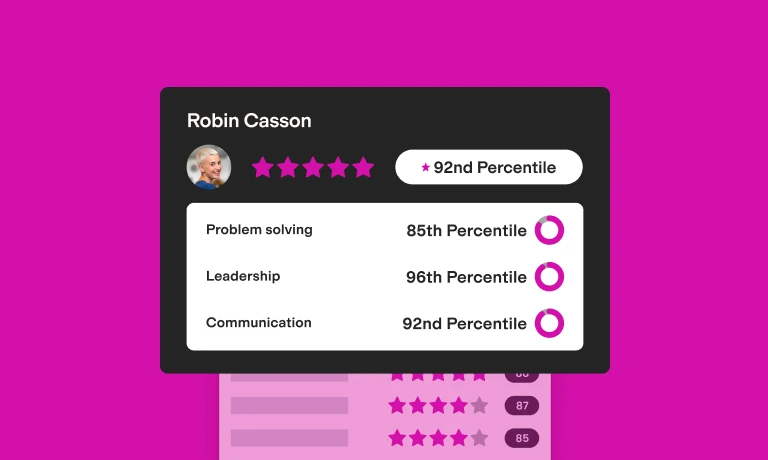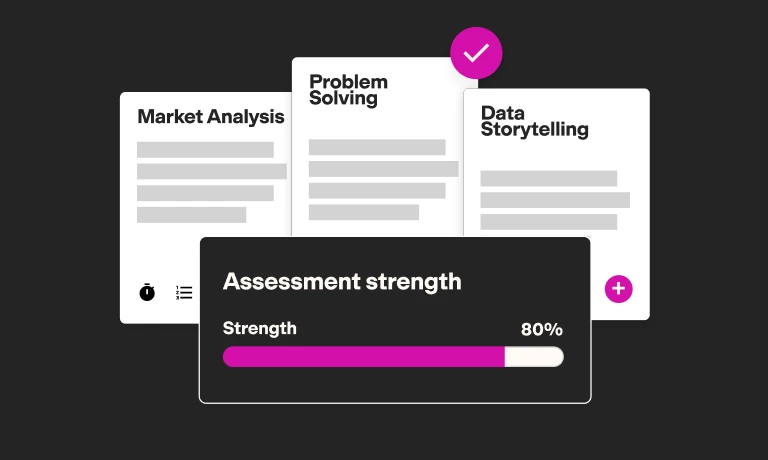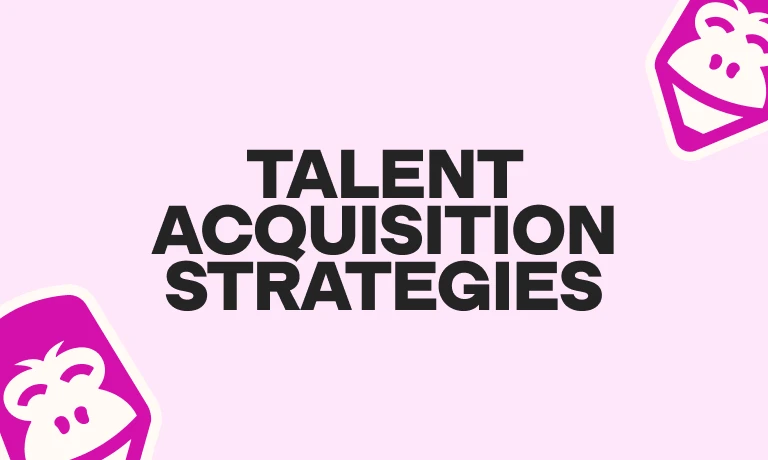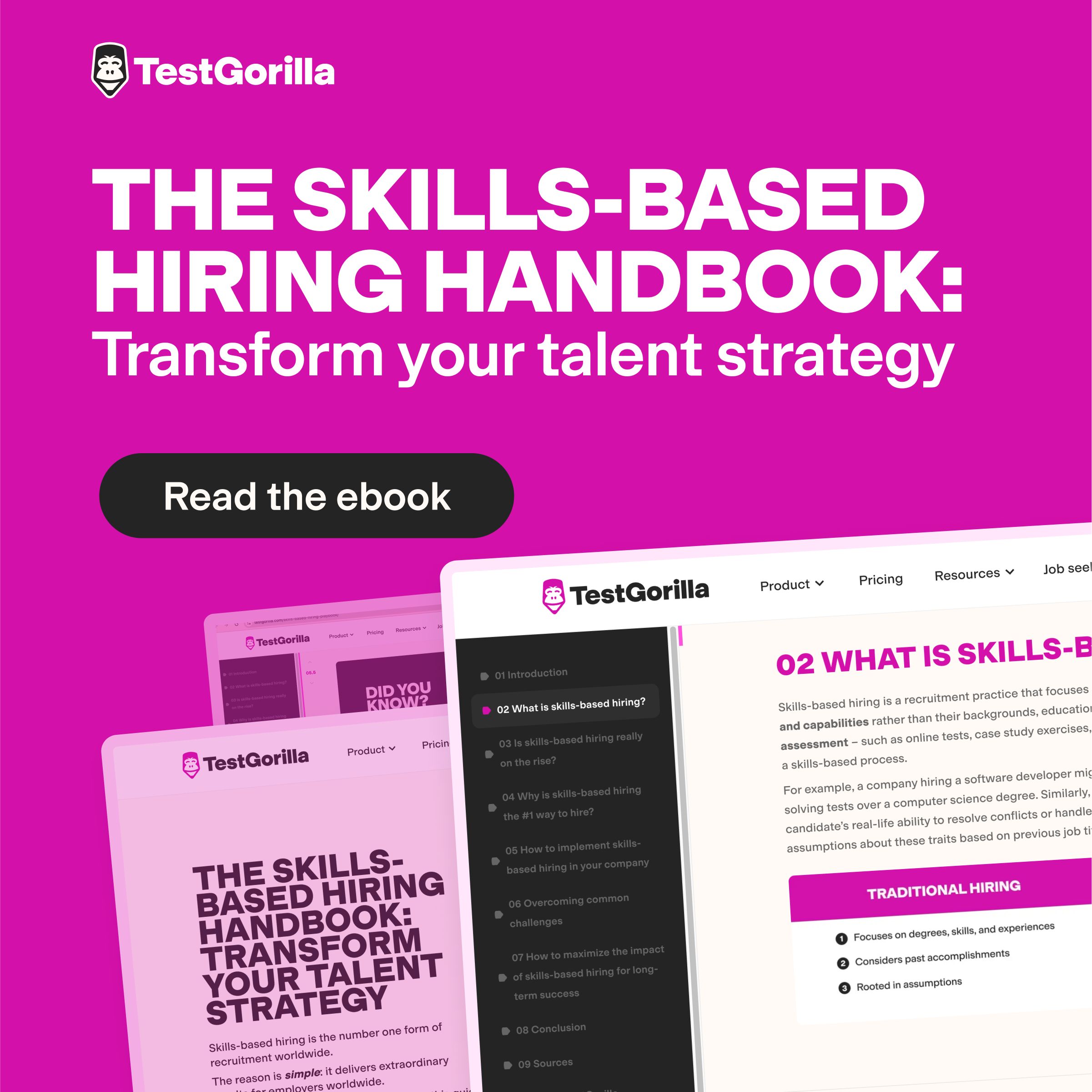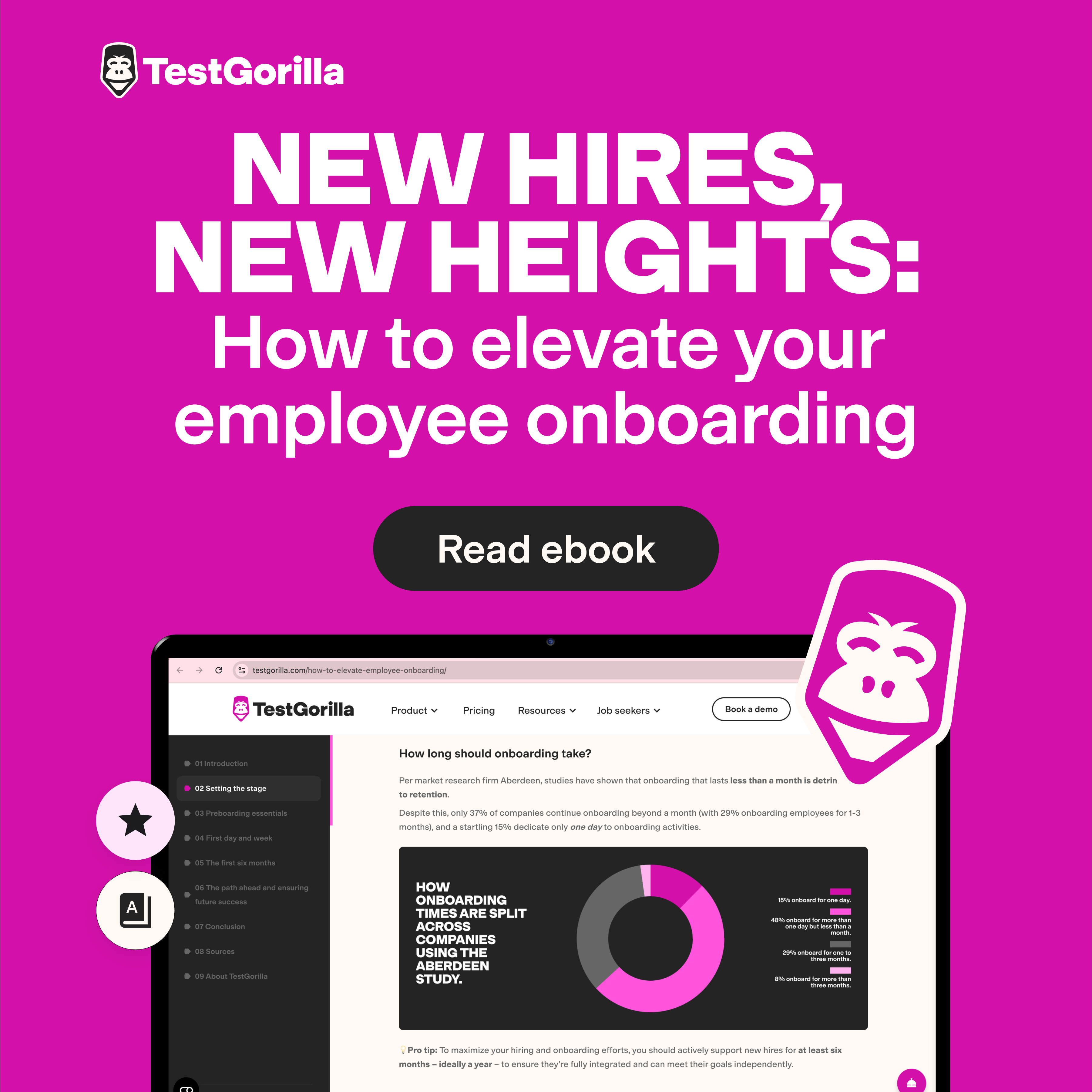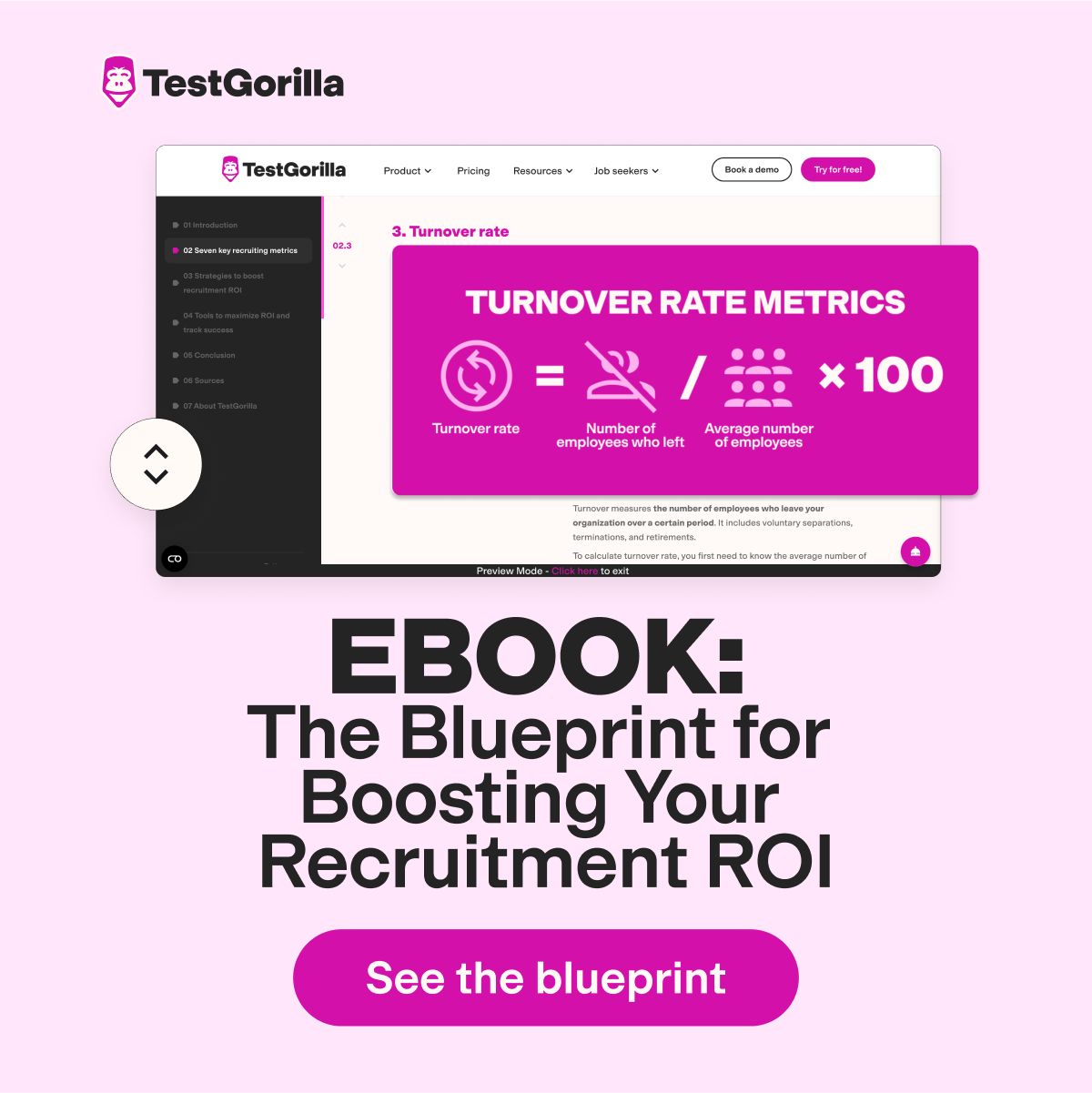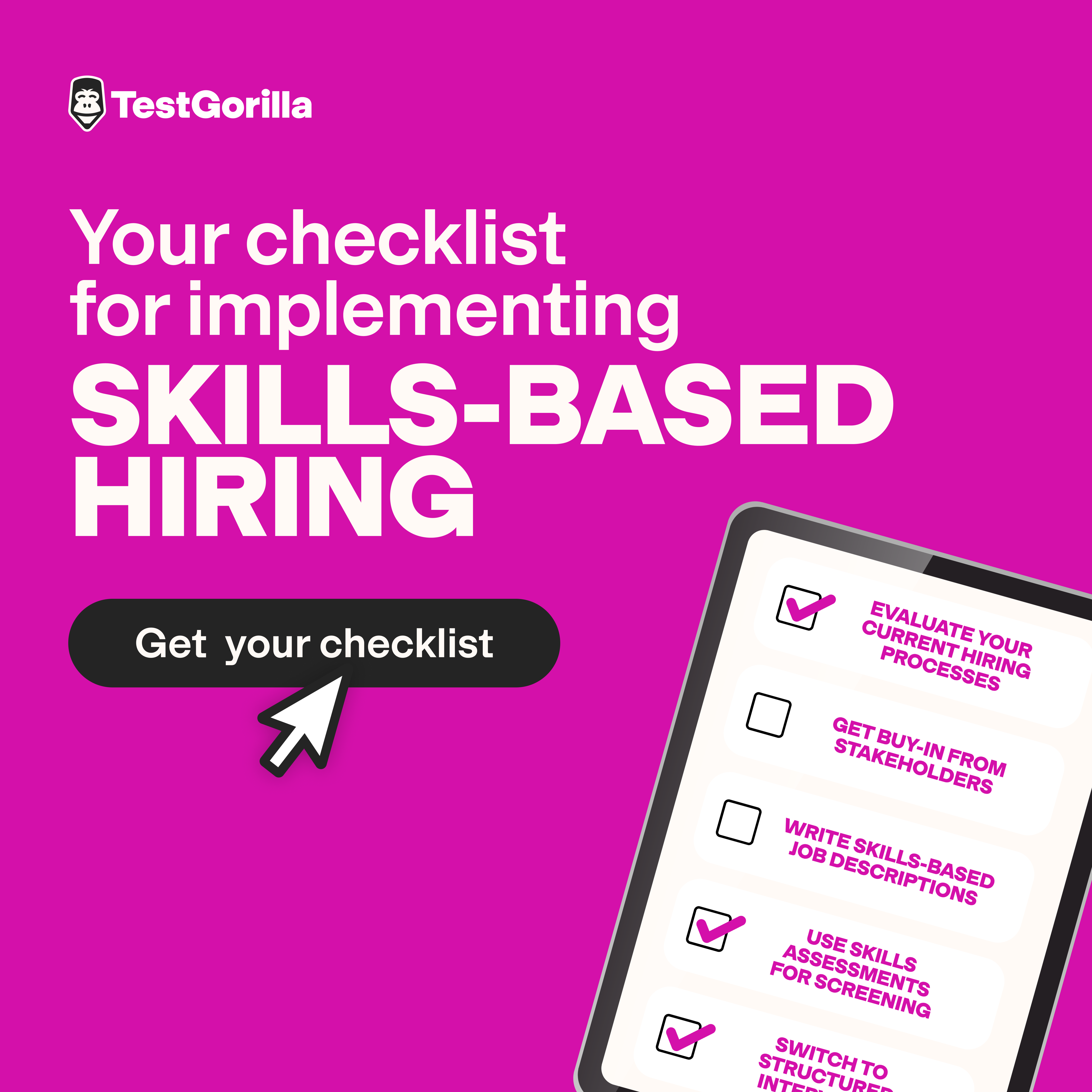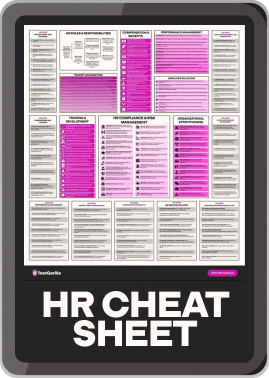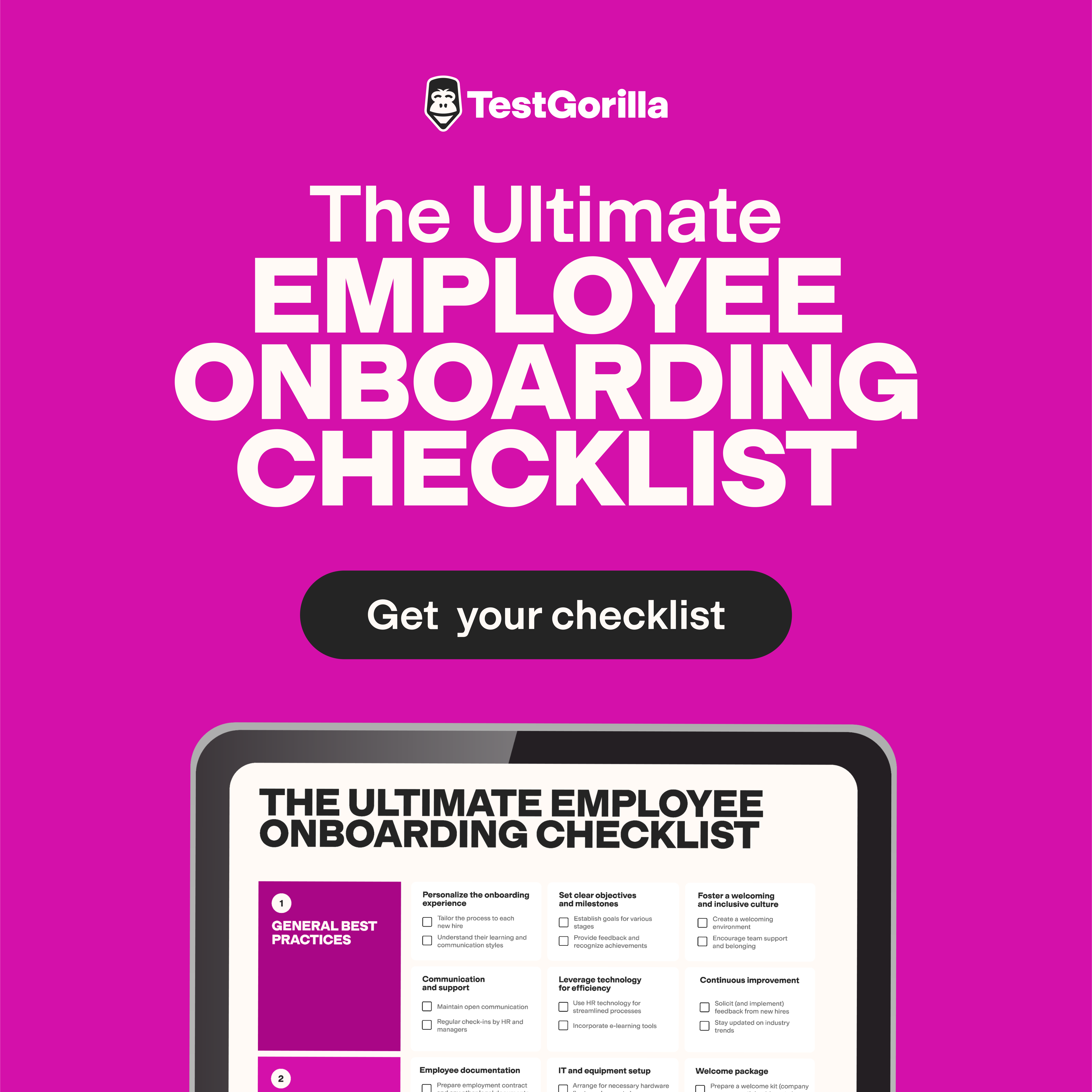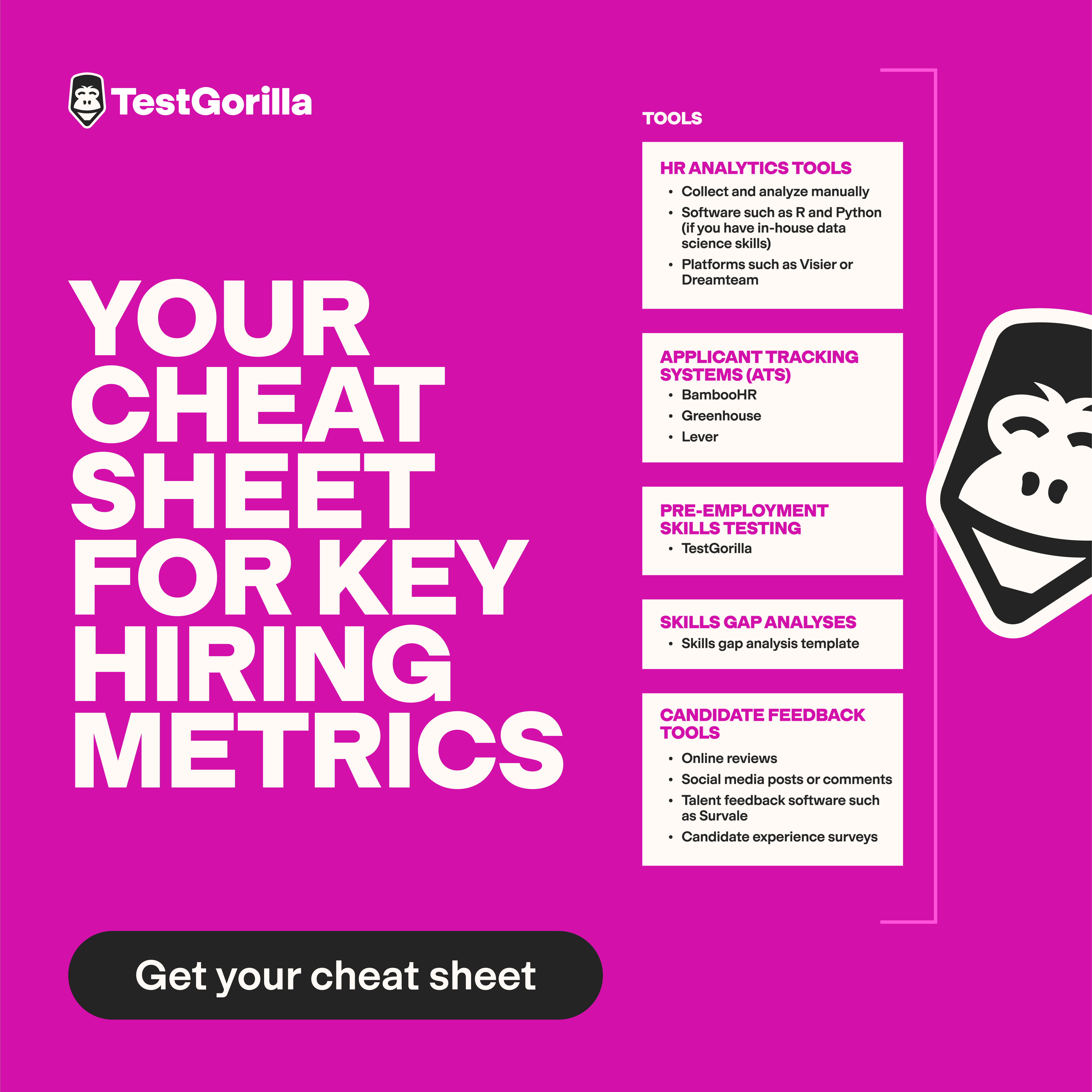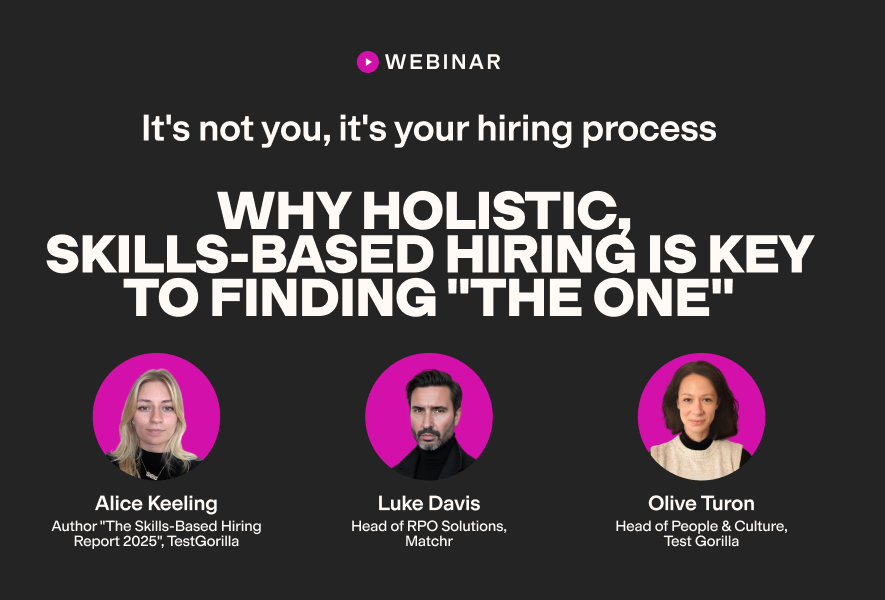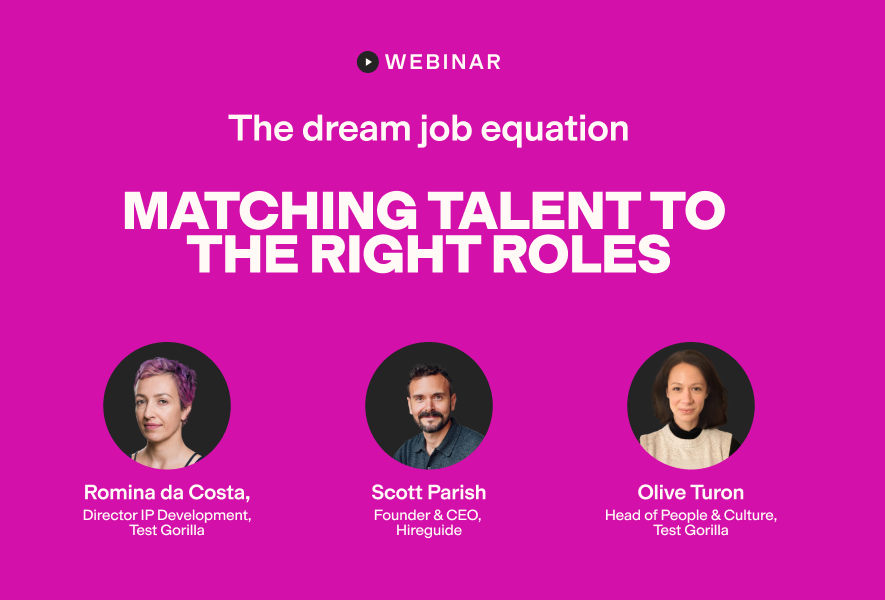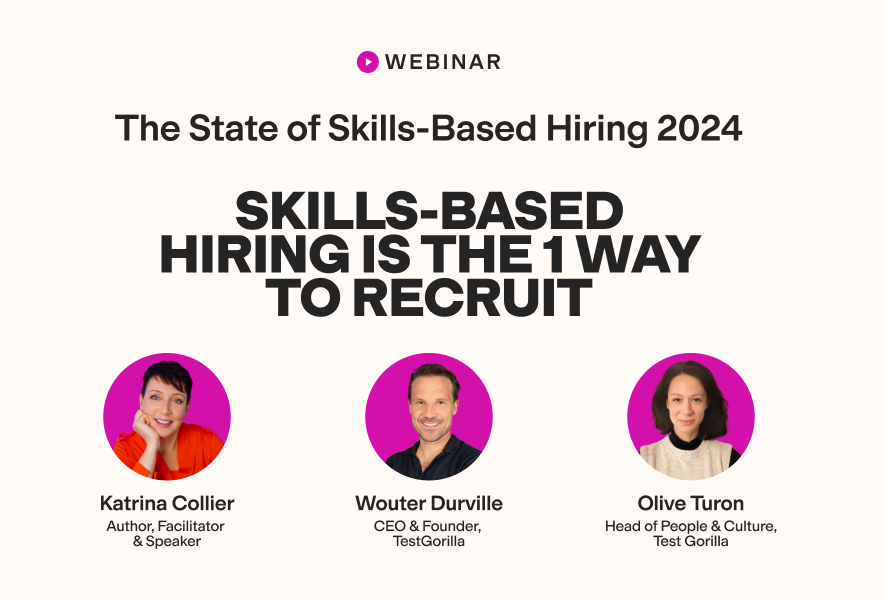Your hiring process probably isn't holistic enough – Here's why that's a problem
Hiring is’t easy at the best of times. And, according to our data, recruiting is only getting harder. 63% of employers say it’s getting more difficult to find the right match for their open roles.
I can stab a good guess at why this is happening. Your hiring process probably isn’t holistic enough.
For our 2025 report on the State of Skills-Based Hiring, we surveyed over 2,000 employers and job seekers to understand their real-world experiences with hiring – what worked, what didn’t, and where the process broke down. Our findings reveal eye-opening trends that highlight just how critical it is to hire holistically.
Below, I share some revealing stats from the report that demonstrate why holistic hiring processes lead to better outcomes. I’ll also explain what a holistic approach to hiring looks like.
What’s wrong with your hiring process?
One big reason companies mis-hire: They view job candidates as assets to plug into a role, zeroing in on specific criteria – like educational backgrounds or previous job titles – while overlooking things like their values, soft skills, personalities, behavioral competencies, and potential.
Our data shows that 72% of employers and 82% of job seekers agree that considering the whole candidate (including their skills, personality, and cultural alignment or culture add) leads to better hiring decisions and improved organizational outcomes.
In short, their hiring processes are too narrow minded. They don’t consider the whole candidate. The most common hiring pitfalls – the ones that tend to prevent employers from hiring holistically – include:
Over-reliance on resumes
Resumes are so deeply ingrained in the recruitment process that employers find it hard to let them go, despite their obvious shortcomings.
According to our research, 89% of UK and 86% of US employers experience problems with resumes:
39% of employers struggle to determine if they’re accurate
45% find it hard to rank applicants using resumes
34% can’t tell if a candidate has the right skills from their resume
ResumeLab surveyed nearly 2,000 participants and 70% admitted to lying on their resumes, including embellishing responsibilities, overstating management experience, inflating achievements, and more.
But are employers changing their preference for resumes? Not really. Even the employers who’ve switched to more objective, skills-based assessments still rely on resumes.
76% of employers are using skills tests in 2025, but nearly two-thirds (62%) of them use resumes as the first step of the screening process. This is a dangerous game – it could lead to progressing incapable candidates and instantly eliminating those who could’ve been perfect for the job. 36% use skills tests before screening resumes, and 2% don’t use resumes at all.
Rather than using resumes alone, employers should look beyond them, and take multiple hiring signals into account before screening people out.
Emphasis on degrees and pedigrees
For a long time, traditional hiring has placed far too much value on college degrees. Unfortunately, many employers still do.
A joint report by the Burning Glass Institute and Harvard Business School showed that while some companies have removed degree requirements from job postings, they haven’t followed through on their word. In fact, less than one in 700 hires benefited from the so-called "no-degree reforms."
Our data reflects this, too. Whilst 53% of employers have removed degree requirements (a big increase from only 38% last year), just under half of the employers we surveyed think it’s more important to have a degree than it was 5 years ago.
This is a problem because it scuppers the impact of removing degree requirements. Most employers are still using resumes and, even if a degree is not listed as a requirement, recruiters can easily discern who does and doesn’t have a degree from their resume. Knowingly or unknowingly, this could influence their screening decisions and lead to bias, regardless of company policy on degree requirements.
Looking for shiny job titles and years of experience
We’ve all been there – impressed by a title like “Head of [something]” and double-digit years of work experience in a sector.
Don’t get me wrong: These factors are valuable in learning about a candidate’s capabilities. That said, some recruiters and hiring managers overindex on these when, in fact, neither reflects a candidate's full range of strengths (or weaknesses).
But are job titles and years of experience even reliable? The ResumeLab study I mentioned above found that, in addition to fibbing about their accomplishments, 52% of job seekers admitted to embellishing their job titles to appear more impressive.
Even if candidates aren’t lying, job titles aren’t always what they seem. For example, many startups and small companies use titles like "manager" or "lead," even for roles that have no management or leadership responsibilities. This can mislead a recruit into believing an applicant is ready for a management role.
Similarly, years of experience doesn’t necessarily dictate skill level. As a previous colleague of mine used to mention: Just because you’ve been cooking for yourself your whole adult life, doesn’t make you a good cook.
Thinking technical skills are everything
Technical skills are easy to measure and check off a list. Plus, in certain fields, like tech, healthcare, construction, and so on, job requirements are genuinely closely tied to one’s hard skills and expertise. When a hiring manager says we need someone who can do X, recruiters find candidates who can do X and hire them because it’s a safer bet.
But what happens when you look at technical skills and nothing else? Much can go wrong. Imagine hiring an excellent programmer who sucks at communicating with their team or is a horrible manager. They’ll probably cause more harm than good.
We have the evidence to back this up. Data from The State of Skills-Based Hiring 2025, shows that 78% of employers have hired a candidate with strong technical skills who didn’t perform well due to a lack of soft skills or poor cultural fit.
Additionally, 52% of job seekers told us they have been in that position – where they’re hired for their technical skills but aren’t successful due to a lack of soft skills or cultural alignment. A quarter of those said the experience was so bad they quit the job.
"The traditional process completely misses things like adaptability, emotional intelligence, and cultural impact. I've seen brilliant Excel wizards fail miserably because they couldn't handle pressure or work in teams." Andrew Lokenauth, Founder at TheFinanceNewsletter.com
Going on a vibes and hunches
The only thing worse than going overboard with resumes, degrees, etc., is making decisions based on a "gut feel." One survey found that 28% of employers cite a gut feeling as their main reason for hiring someone.
This gut feeling most often stems from the interview process.
A recent study by Textio analyzed more than 1,000 interviews and found that successful candidates were 12 times more likely to be described with subjective terms, like "great personality," than those who weren’t picked.
While having a great personality can contribute to interpersonal relationships and a company’s culture, surely it can’t be the only thing an interviewer remembers about why they’ve hired a candidate?
While interviews – especially face-to-face ones – provide rich information about a candidate’s attributes, communication style, presentability, and more, they’re also rife with biases. An interviewer might favor a candidate because they’re passionate about the same sport or even based on what they look like. Making decisions because you "clicked" with someone could be very damaging if you don’t ensure they’re well-suited to the job.
Why one-dimensional hiring is costly
Let’s explore some of the tangible and hidden costs of mis-hiring.
1. Wasted time, effort, and money
When you hire based on a narrow view, you’re likely to end up with the wrong person. Here’s what you’ve wasted in the process:
$12,540–56,200: According to Paychex, this is the average cost per hire in 2025, including direct costs, such as hiring sofware, job ads, recruitment team fees, etc. – and indirect costs, like time lost in productivity, hiring manager time, career fairs, and so on. It doesn’t even include payroll taxes, which you must also account for.
41 days: A 2025 recruiting benchmark report found that this is the average time to hire an employee, mostly stemming from 42% more interviews now compared with a few years ago.
And let’s not forget the opportunity cost of losing out on top talent because of bad hiring decisions.
2. Increased turnover rates
Placing the wrong person in the wrong job can increase turnover in your company. Even if you try training them to improve, there’s no guarantee they’ll want to stay – especially when the mismatch is at a culture or value level, which are much harder to fix.
Our research shows that:
52% of candidates have had strong technical skills for a job but have not been successful because of a lack of soft skills or poor cultural fit
54% say this left them unhappy and unfulfilled at work
25% say it led them to quit
Further, Employ’s 2025 Job Seeker Nation Report has shown that workers often don’t realize they’ve landed in a "less-than-ideal situation" until after they’re hired. So, 36% of new hires leave their jobs in the first 90 days due to a "mismatch in the hiring process" or "disconnect" in expectations.
And unfortunately, this isn’t where it ends. Bad hires can do some serious damage while they’re still around. The National Business Research Institute (NBRI) showed that 37% of companies reporting a bad hire said it impacted team morale. This can have a domino effect – pushing other high-performing employees to resign.
3. Damaged profitability and customer relationships
When you haven’t properly checked someone’s job fit from all angles - skills, personality, and culture – it can ripple across your entire business.
For instance, hiring an unskilled worker because you "like" them can backfire when they’re underperforming, making mistakes, missing deadlines, and slowing down projects.
This has very real implications. According to the NBRI report, 10% of companies that reported mis-hiring said it affected their top line, and 18% said bad hires negatively impacted client relationships.
4. Stifled innovation and adaptability
Fragmented hiring decisions – especially those that have neglected candidates’ soft skills and cultural alignment – can stunt innovation and hinder workplace adaptability.
The World Economic Forum's Future of Jobs Report 2025 highlights that analytical thinking remains the most sought-after core skill, with 70% of companies considering it an essential skill for the future. This is closely followed by skills like resilience, flexibility, agility, and leadership.
When you overlook these traits in your hiring process, you risk building a team that struggles to navigate change or think creatively in unfamiliar circumstances. This can really set you back compared with more agile competitors, especially in a world driven by tech, AI, and shifting consumer sentiments, where change is the only constant.
The best insights on HR and recruitment, delivered to your inbox.
Biweekly updates. No spam. Unsubscribe any time.
So what does a holistic hiring process actually look like?
A holistic hiring approach looks at candidates as whole, nuanced humans – not a set of professional skills on a piece of paper. While holistic hiring can take education and experience into account for roles in healthcare, law, etc. – which legally require credentials – it generally focuses on these key factors:
Hard skills: Do candidates have the technical knowledge and expertise needed to do a job well?
Soft skills: Can they communicate clearly, manage or lead effectively, manage conflict, and so on?
Cognitive abilities: How quickly can they learn on the job? Do they show strong problem-solving skills, critical thinking, and the ability to think creatively?
Behavioral competencies: Do candidates have the right behaviors and attitude needed for success, for instance, are they adaptable, calm under pressure, and conscientious?
Job expectations and motivation: Are they looking for a full or part-time role? Do they prefer an on-site, hybrid, or remote arrangement? What are their salary expectations? What motivates them?
Values and cultural contributions: Do applicants align with your company’s mission and values? Will they add to your company’s culture?
Using multi-measure testing to hire holistically
Employers are assessing these factors quickly and easily using multi-measure testing – a combination of online skills tests that cover all the above areas.
76% of employers are using skills tests in 2025, and one-third of those have adopted multi-measure testing. Multi-measure testing for job-relevant skills is the best way to predict job success, and these employers are more satisfied with their hires overall.
91% of employers who use multi-measure testing are satisfied with their hires, versus just 67% of employers who don’t test for skills at all.
And just to add even more data to this topic: 6 in 10 employers told us hiring candidates who possess a combination of strong technical skills, essential soft skills, and good cultural alignment actually improves team performance. It really is worth testing applicants on all these aspects before adding them to your company.
The role of interviews
Holistic hiring isn’t just about assessing different aspects of someone’s capabilities – it also involves a mix of assessment methods to reduce the risk of bias or blind spots that can come from relying on a single approach.
While multi-measure tests are a great way to screen candidates and find those with the right skills and traits, structured behavioral interviews (like STAR interviews) put these qualities into context.
Questions about how candidates have handled different situations in the past help employers get a true sense of their approach to problem-solving, decision-making abilities, and overall mindset.
Research shows that structured interviews are strong predictors of job performance. Of course, nobody would have time to interview all of their candidates (which is why multi-measure testing should come first), but interviews are a crucial part of holistic hiring.
Use holistic hiring processes to land the cream of the crop
Focusing too much on a single aspect of performance (like hard skills or degrees) or overemphasizing one particular process (like resume screening or interviewing) can lead to mis-hiring, turnover, and lost time and money.
The best way to prevent these challenges has been hiding in plain sight. We human beings are nuanced creatures. It’s time to make room for that nuance in our hiring processes. This is the goal of holistic hiring processes.
If you enjoyed reading this blog and diving into stats from our most recent research, then you’re in luck! Check out the 2025 State of Skills-Based Hiring Report for tons more data on today’s hiring landscape.
If you’re short on time, read the most important recruitment stats here.
Related posts
You've scrolled this far
Why not try TestGorilla for free, and see what happens when you put skills first.


